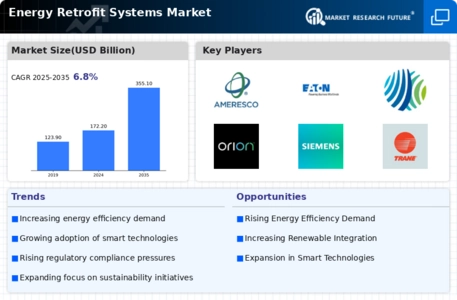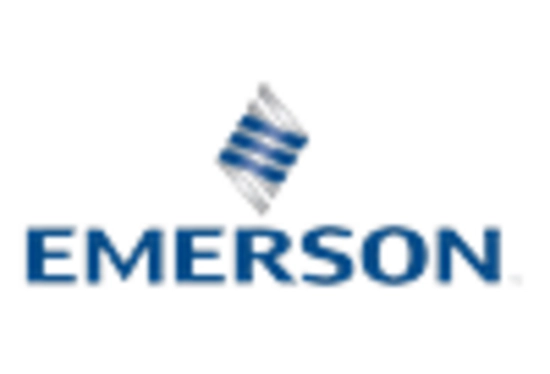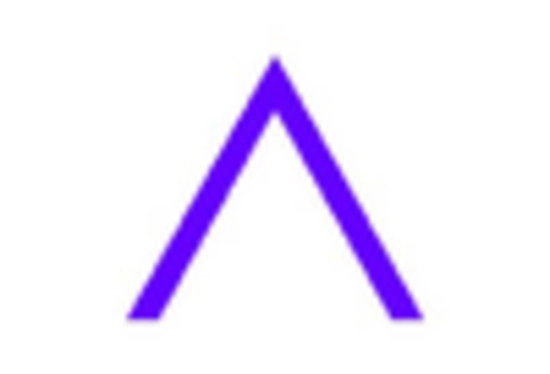-
EXECUTIVE SUMMARY
-
MARKET INTRODUCTION
-
Definition
-
Scope of the Study
- Research Objective
- Assumptions
- Limitations
-
RESEARCH METHODOLOGY
-
3.1.
-
Overview
-
Data Mining
-
Secondary Research
-
Primary Research
- Primary Interviews and Information Gathering Process
- Breakdown
-
of Primary Respondents
-
Forecasting Modality
-
Market Size Estimation
- Bottom-Up Approach
- Top-Down Approach
-
Data Triangulation
-
Validation
-
MARKET DYNAMICS
-
Overview
-
Drivers
-
Restraints
-
Opportunities
-
MARKET FACTOR ANALYSIS
-
5.1.
-
Value Chain Analysis
-
Porter’s Five Forces Analysis
- Bargaining
- Bargaining Power of Buyers
- Threat of
- Threat of Substitutes
- Intensity of Rivalry
-
Power of Suppliers
-
New Entrants
-
COVID-19 Impact Analysis
- Market Impact Analysis
- Opportunity and Threat Analysis
-
5.3.2.
-
Regional Impact
-
GLOBAL ENERGY
-
RETROFIT SYSTEMS MARKET, BY PRODUCT
-
Overview
-
Envelope
-
6.3.
-
LED Retrofit Lighting
-
HVAC Retrofit
-
Appliances
-
GLOBAL
-
ENERGY RETROFIT SYSTEMS MARKET, BY APPLICATION
-
Overview
-
Residential
-
Non-Residential
-
GLOBAL ENERGY RETROFIT SYSTEMS MARKET, BY REGION
-
Overview
-
North America
- U.S.
- Canada
- Germany
- France
- U.K
- Italy
- Spain
- Rest of Europe
-
8.3.
-
Europe
-
Asia-Pacific
- China
- India
- Japan
- South Korea
- Australia
- Rest of Asia-Pacific
-
Rest of the World
- Middle East
- Africa
- Latin America
-
COMPETITIVE LANDSCAPE
-
9.1.
-
Overview
-
Competitive Analysis
-
Market Share Analysis
-
9.4.
-
Major Growth Strategy in the Global Energy Retrofit Systems Market,
-
Competitive
-
Benchmarking
-
Leading Players in Terms of Number of Developments in the
-
Global Energy Retrofit Systems Market,
-
Key developments and Growth Strategies
- New PRODUCT Launch/Application Deployment
- Merger & Acquisitions
- Joint Ventures
-
Major Players Financial Matrix
- Sales
- Major Players R&D Expenditure. 2022
-
& Operating Income, 2022
-
COMPANY PROFILES
-
DAIKIN INDUSTRIES, LTD.
- Company Overview
- Financial Overview
- PRODUCTs Offered
- Key Developments
- SWOT Analysis
- Key Strategies
-
AMERESCO
- Financial Overview
- PRODUCTs Offered
- Key Developments
- SWOT Analysis
- Key Strategies
-
10.2.1.
-
Company Overview
-
EATON
- Company Overview
- Financial Overview
- Key Developments
- SWOT Analysis
-
10.3.3.
-
PRODUCTs Offered
-
10.3.6.
-
Key Strategies
-
AECOM
- Company Overview
- Financial
- PRODUCTs Offered
- Key Developments
- Key Strategies
-
Overview
-
10.4.5.
-
SWOT Analysis
-
JOHNSON CONTROLS
- Financial Overview
- PRODUCTs Offered
- Key Developments
- SWOT Analysis
- Key Strategies
-
10.5.1.
-
Company Overview
-
ORION ENERGY SYSTEMS, INC.
- Company Overview
- Financial
- PRODUCTs Offered
- Key Developments
- Key Strategies
-
Overview
-
10.6.5.
-
SWOT Analysis
-
SIEMENS
- Company
- Financial Overview
- PRODUCTs Offered
- SWOT Analysis
- Key Strategies
- Company Overview
- Financial Overview
- Key Developments
- SWOT Analysis
-
Overview
-
10.7.4.
-
Key Developments
-
10.8.
-
TRANE
-
10.8.3.
-
PRODUCTs Offered
-
10.8.6.
-
Key Strategies
-
SIGNIFY HOLDING
- Company Overview
- PRODUCTs Offered
- Key Developments
- SWOT Analysis
- Key Strategies
-
10.9.2.
-
Financial Overview
-
ENGIE
- Financial Overview
- PRODUCTs Offered
- Key Developments
- SWOT Analysis
- Key Strategies
-
10.10.1.
-
Company Overview
-
General Electric
- Company Overview
- Financial
- PRODUCTs Offered
- Key Developments
- Key Strategies
-
Overview
-
10.11.5.
-
SWOT Analysis
-
Schneider Electric
- Financial Overview
- PRODUCTs Offered
- Key Developments
- SWOT Analysis
- Key Strategies
-
10.12.1.
-
Company Overview
-
APPENDIX
-
References
-
Related Reports
-
-
LIST
-
OF TABLES
-
GLOBAL ENERGY RETROFIT SYSTEMS MARKET, SYNOPSIS, 2018-2032
-
GLOBAL ENERGY RETROFIT SYSTEMS MARKET, ESTIMATES & FORECAST, 2018-2032
-
(USD BILLION)
-
GLOBAL ENERGY RETROFIT SYSTEMS MARKET, BY PRODUCT, 2018-2032
-
(USD BILLION)
-
GLOBAL ENERGY RETROFIT SYSTEMS MARKET, BY APPLICATION,
-
NORTH AMERICA ENERGY RETROFIT SYSTEMS MARKET,
-
BY PRODUCT, 2018-2032 (USD BILLION)
-
NORTH AMERICA ENERGY RETROFIT SYSTEMS
-
MARKET, BY APPLICATION, 2018-2032 (USD BILLION)
-
NORTH AMERICA ENERGY
-
RETROFIT SYSTEMS MARKET, BY COUNTRY, 2018-2032 (USD BILLION)
-
U.S. ENERGY
-
RETROFIT SYSTEMS MARKET, BY PRODUCT, 2018-2032 (USD BILLION)
-
U.S. ENERGY
-
RETROFIT SYSTEMS MARKET, BY APPLICATION, 2018-2032 (USD BILLION)
-
CANADA
-
ENERGY RETROFIT SYSTEMS MARKET, BY PRODUCT, 2018-2032 (USD BILLION)
-
TABLE 11
-
CANADA ENERGY RETROFIT SYSTEMS MARKET, BY APPLICATION, 2018-2032 (USD BILLION)
-
EUROPE ENERGY RETROFIT SYSTEMS MARKET, BY PRODUCT, 2018-2032 (USD BILLION)
-
EUROPE ENERGY RETROFIT SYSTEMS MARKET, BY APPLICATION, 2018-2032 (USD
-
BILLION)
-
EUROPE ENERGY RETROFIT SYSTEMS MARKET, BY COUNTRY, 2018-2032
-
(USD BILLION)
-
GERMANY ENERGY RETROFIT SYSTEMS MARKET, BY PRODUCT,
-
GERMANY ENERGY RETROFIT SYSTEMS MARKET, BY
-
APPLICATION, 2018-2032 (USD BILLION)
-
FRANCE ENERGY RETROFIT SYSTEMS
-
MARKET, BY PRODUCT, 2018-2032 (USD BILLION)
-
FRANCE ENERGY RETROFIT
-
SYSTEMS MARKET, BY APPLICATION, 2018-2032 (USD BILLION)
-
ITALY ENERGY
-
RETROFIT SYSTEMS MARKET, BY PRODUCT, 2018-2032 (USD BILLION)
-
ITALY
-
ENERGY RETROFIT SYSTEMS MARKET, BY APPLICATION, 2018-2032 (USD BILLION)
-
TABLE
-
SPAIN ENERGY RETROFIT SYSTEMS MARKET, BY PRODUCT, 2018-2032 (USD BILLION)
-
SPAIN ENERGY RETROFIT SYSTEMS MARKET, BY APPLICATION, 2018-2032 (USD
-
BILLION)
-
U.K ENERGY RETROFIT SYSTEMS MARKET, BY PRODUCT, 2018-2032
-
(USD BILLION)
-
U.K ENERGY RETROFIT SYSTEMS MARKET, BY APPLICATION,
-
REST OF EUROPE ENERGY RETROFIT SYSTEMS MARKET,
-
BY PRODUCT, 2018-2032 (USD BILLION)
-
REST OF EUROPE ENERGY RETROFIT
-
SYSTEMS MARKET, BY APPLICATION, 2018-2032 (USD BILLION)
-
ASIA PACIFIC
-
ENERGY RETROFIT SYSTEMS MARKET, BY PRODUCT, 2018-2032 (USD BILLION)
-
TABLE 28
-
ASIA PACIFIC ENERGY RETROFIT SYSTEMS MARKET, BY APPLICATION, 2018-2032 (USD BILLION)
-
ASIA PACIFIC ENERGY RETROFIT SYSTEMS MARKET, BY COUNTRY, 2018-2032 (USD
-
BILLION)
-
JAPAN ENERGY RETROFIT SYSTEMS MARKET, BY PRODUCT, 2018-2032
-
(USD BILLION)
-
JAPAN ENERGY RETROFIT SYSTEMS MARKET, BY APPLICATION,
-
CHINA ENERGY RETROFIT SYSTEMS MARKET, BY PRODUCT,
-
CHINA ENERGY RETROFIT SYSTEMS MARKET, BY APPLICATION,
-
INDIA ENERGY RETROFIT SYSTEMS MARKET, BY PRODUCT,
-
INDIA ENERGY RETROFIT SYSTEMS MARKET, BY APPLICATION,
-
AUSTRALIA ENERGY RETROFIT SYSTEMS MARKET,
-
BY PRODUCT, 2018-2032 (USD BILLION)
-
AUSTRALIA ENERGY RETROFIT SYSTEMS
-
MARKET, BY APPLICATION, 2018-2032 (USD BILLION)
-
SOUTH KOREA ENERGY
-
RETROFIT SYSTEMS MARKET, BY PRODUCT, 2018-2032 (USD BILLION)
-
SOUTH
-
KOREA ENERGY RETROFIT SYSTEMS MARKET, BY APPLICATION, 2018-2032 (USD BILLION)
-
REST OF ASIA-PACIFIC ENERGY RETROFIT SYSTEMS MARKET, BY PRODUCT, 2018-2032
-
(USD BILLION)
-
REST OF ASIA-PACIFIC ENERGY RETROFIT SYSTEMS MARKET,
-
BY APPLICATION, 2018-2032 (USD BILLION)
-
REST OF WORLD ENERGY RETROFIT
-
SYSTEMS MARKET, BY PRODUCT, 2018-2032 (USD BILLION)
-
REST OF WORLD
-
ENERGY RETROFIT SYSTEMS MARKET, BY APPLICATION, 2018-2032 (USD BILLION)
-
TABLE
-
REST OF WORLD ENERGY RETROFIT SYSTEMS MARKET, BY COUNTRY, 2018-2032 (USD BILLION)
-
MIDDLE EAST ENERGY RETROFIT SYSTEMS MARKET, BY PRODUCT, 2018-2032 (USD
-
BILLION)
-
MIDDLE EAST ENERGY RETROFIT SYSTEMS MARKET, BY APPLICATION,
-
AFRICA ENERGY RETROFIT SYSTEMS MARKET, BY
-
PRODUCT, 2018-2032 (USD BILLION)
-
AFRICA ENERGY RETROFIT SYSTEMS MARKET,
-
BY APPLICATION, 2018-2032 (USD BILLION)
-
LATIN AMERICA ENERGY RETROFIT
-
SYSTEMS MARKET, BY PRODUCT, 2018-2032 (USD BILLION)
-
LATIN AMERICA
-
ENERGY RETROFIT SYSTEMS MARKET, BY APPLICATION, 2018-2032 (USD BILLION)
-
-
LIST OF FIGURES
-
RESEARCH PROCESS
-
MARKET STRUCTURE
-
FOR THE GLOBAL ENERGY RETROFIT SYSTEMS MARKET
-
MARKET DYNAMICS FOR
-
THE GLOBAL ENERGY RETROFIT SYSTEMS MARKET
-
GLOBAL ENERGY RETROFIT SYSTEMS
-
MARKET, SHARE (%), BY PRODUCT, 2022
-
GLOBAL ENERGY RETROFIT SYSTEMS
-
MARKET, SHARE (%), BY APPLICATION, 2022
-
GLOBAL ENERGY RETROFIT SYSTEMS
-
MARKET, SHARE (%), BY REGION, 2022
-
NORTH AMERICA: ENERGY RETROFIT
-
SYSTEMS MARKET, SHARE (%), BY REGION, 2022
-
EUROPE: ENERGY RETROFIT
-
SYSTEMS MARKET, SHARE (%), BY REGION, 2022
-
ASIA-PACIFIC: ENERGY RETROFIT
-
SYSTEMS MARKET, SHARE (%), BY REGION, 2022
-
REST OF THE WORLD: ENERGY
-
RETROFIT SYSTEMS MARKET, SHARE (%), BY REGION, 2022
-
GLOBAL ENERGY
-
RETROFIT SYSTEMS MARKET: COMPANY SHARE ANALYSIS, 2022 (%)
-
DAIKIN
-
INDUSTRIES, LTD.: FINANCIAL OVERVIEW SNAPSHOT
-
DAIKIN INDUSTRIES,
-
LTD.: SWOT ANALYSIS
-
AMERESCO: FINANCIAL OVERVIEW SNAPSHOT
-
FIGURE
-
AMERESCO: SWOT ANALYSIS
-
EATON: FINANCIAL OVERVIEW SNAPSHOT
-
EATON: SWOT ANALYSIS
-
AECOM: FINANCIAL OVERVIEW SNAPSHOT
-
AECOM: SWOT ANALYSIS
-
JOHNSON CONTROLS.: FINANCIAL OVERVIEW
-
SNAPSHOT
-
JOHNSON CONTROLS.: SWOT ANALYSIS
-
ORION ENERGY
-
SYSTEMS, INC.: FINANCIAL OVERVIEW SNAPSHOT
-
ORION ENERGY SYSTEMS,
-
INC.: SWOT ANALYSIS
-
SIEMENS: FINANCIAL OVERVIEW SNAPSHOT
-
FIGURE
-
SIEMENS: SWOT ANALYSIS
-
TRANE: FINANCIAL OVERVIEW SNAPSHOT
-
FIGURE
-
TRANE: SWOT ANALYSIS
-
SIGNIFY HOLDING: FINANCIAL OVERVIEW SNAPSHOT
-
SIGNIFY HOLDING: SWOT ANALYSIS
-
ENGIE: FINANCIAL OVERVIEW
-
SNAPSHOT
-
ENGIE: SWOT ANALYSIS
-
GENERAL ELECTRIC: FINANCIAL
-
OVERVIEW SNAPSHOT
-
GENERAL ELECTRIC: SWOT ANALYSIS
-
FIGURE 34
-
SCHNEIDER ELECTRIC: FINANCIAL OVERVIEW SNAPSHOT
-
SCHNEIDER ELECTRIC:
-
SWOT ANALYSIS









Leave a Comment